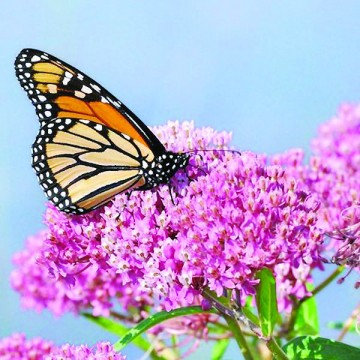Get to Know Your Milkweed
It is encouraging to see everybody talking about native plants these days. But native plants are nothing new. They were here before colonization and have evolved in our environment over time.
You can increase the biodiversity in your garden by planting native plants, which in turn helps to improve our declining ecosystems. Biodiversity provides us with clean water and air, makes for natural checks and balances in the insect world, reduces the need for pesticides and creates sustenance for the natural food chain.
With butterflies there must be native plants to act as host to butterfly larvae. Native plants also provide nectar for the adult butterflies. As well as generalist butterflies that use many different types of plants for nectar and as host plants, there are insects that are specialists, feeding only on one type of plant. Monarch butterflies are specialists in that they only feed on milkweeds.
The three native milkweeds are Asclepias tuberosa (butterfly weed), Asclepias incarnata (swamp milkweed) and Asclepias syriaca (common milkweed). All three of these milkweeds are hardy perennials.
The showiest of our native milkweeds is butterfly weed with its bright orange flowers. Monarchs lay their little white eggs on the underside of the leaves of the butterfly weed plant, and when the larvae hatch they will munch away at the leaves as they grow during the caterpillar phase. As adults, they drink nectar from the bright orange flowers. Butterfly weed likes to grow in full sun in sandy to loamy soil. It makes a large taproot and does not transplant well. Growing from seed gives optimal results. Many bees, wasps, butterfly and beetle species eat the nectar.

Swamp milkweed makes more of a flat flower head of medium pink color with a strong vanilla-like fragrance. It likes to grow in moist sites in full sun and is a good choice for rain gardens or any low-lying, moist, sunny area. It is also beloved by monarch butterflies as a host plant and for its nectar.
Common milkweed is amazingly fragrant and is similar to jasmine blended with honeysuckle. It has spherical flowers of soft pink. It adapts well to wet and dry areas. It is best to keep this rambunctious grower in its own area as it can easily take over a garden.
Bay Weekly has a few more free envelopes of reader Helena Scher’s common milkweed seeds. Stop by or send your SASE to Milkweed, Bay Weekly, 1160 Spa Rd., Suite 1A, Annapolis, MD 21403.
